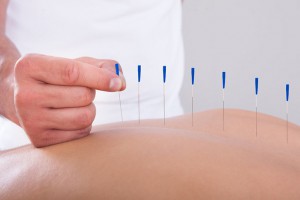Knee Osteoarthritis.. Is Surgery The Only Option
So you have been told you have knee arthritis. Will you need a knee replacement?
The answer is a resounding NO! In recent years there has been a shift towards conservative management of knee osteoarthritis (OA).
Why Conservative Management?
Conservative management (chiropractic, physiotherapy, exercise physiology) of knee OA in some but not all cases can be as effective as Arthroscopy for the reduction of osteoarthritic knee pain. Certainly knee arthroscopy can be fantastic when applied to the appropriate knee injury. A bucket handle meniscus tear is one of these instances.
Knee Arthroscopy
Knee arthroscopy is effective for pain reduction in some but not ALL osteoarthritic knee cases. There are concerns that arthroscopy is being performed in patients where the research has shown that weight loss and exercise may be just as effective.
Orthopaedic surgeon Professor Ian Harris has voiced his concerns about the increasing number of knee surgeries. He is questioning if surgeons are performing arthroscopy for knee pain in pain presentations where the research indicates that the outcomes may similar too conservative interventions. Following the links below to read more on. this topic.
https://www.abc.net.au/health/features/stories/2015/03/25/4203985.htm
There was also an SBS insight episode dedicated to knee surgery and the non-surgical management strategies for knee osteoarthritis.
watch it here https://www.sbs.com.au/news/insight/tvepisode/joint-surgeries
So What Can We Do?
An osteoarthritic knee thrives on less load, and more support. We can achieve this in 2 ways.
1. Lose Weight
Losing weight reduces the load on joints and connective tissue. A 2005 study found that in obese patients a 3kg reduction in weight would reduce knee pressure by up too 12kg.
2: Exercise
Like weight loss, strengthening the knee will reduce pressure on the knee. To begin with, building strength and endurance will be slow, with only slight changes in pain. After about about 2 weeks you notice improvements in the intensity of pain, which will steadily improve over a 6 – 12 week period.
Walking
To begin walking may be a little painful. But eventually it will more comfortable. Walking moves synovial fluid around the joint. Thinks of synovial fluid as nutrients for joints and cartilage. Walking also builds muscular strength and endurance burns calories and improves mental and cardiovascular health.
To begin aim for a 20 minute walk at a moderate pace. As your knee becomes more comfortable start to increase both the length of the walk and intensity. Begin to challenge the knee with some small hill
Supine Knee Extension Exercise
Supine knee extensions are a safe strengthening exercise that place minimal strain on the knee.
1. Lay on your back with a rolled towel under your knee
2. Press the back off the knee into towel
3: Straighten the leg by lifting the foot keeping the back off knee pressed into the towel.

4. Hold this position for 15 seconds, lower leg to start position and rest for 10 seconds.
5. You will feel the quadriceps muscle (the big muscles above the knee) fatigue
6. Repeat for 5 repetitions. If Pain is greater than 3/10 during exercise and last for 24hors please seek the advice of a health professional.
The key point to remember that surgery is not bad. It helps a lot of people suffering from knee pain. However in many knee OA cases conservative management with treatment and exercise can be as effective and cheaper.
If need further advice for knee pain associated with knee pain, call 0404404103 or book online at








